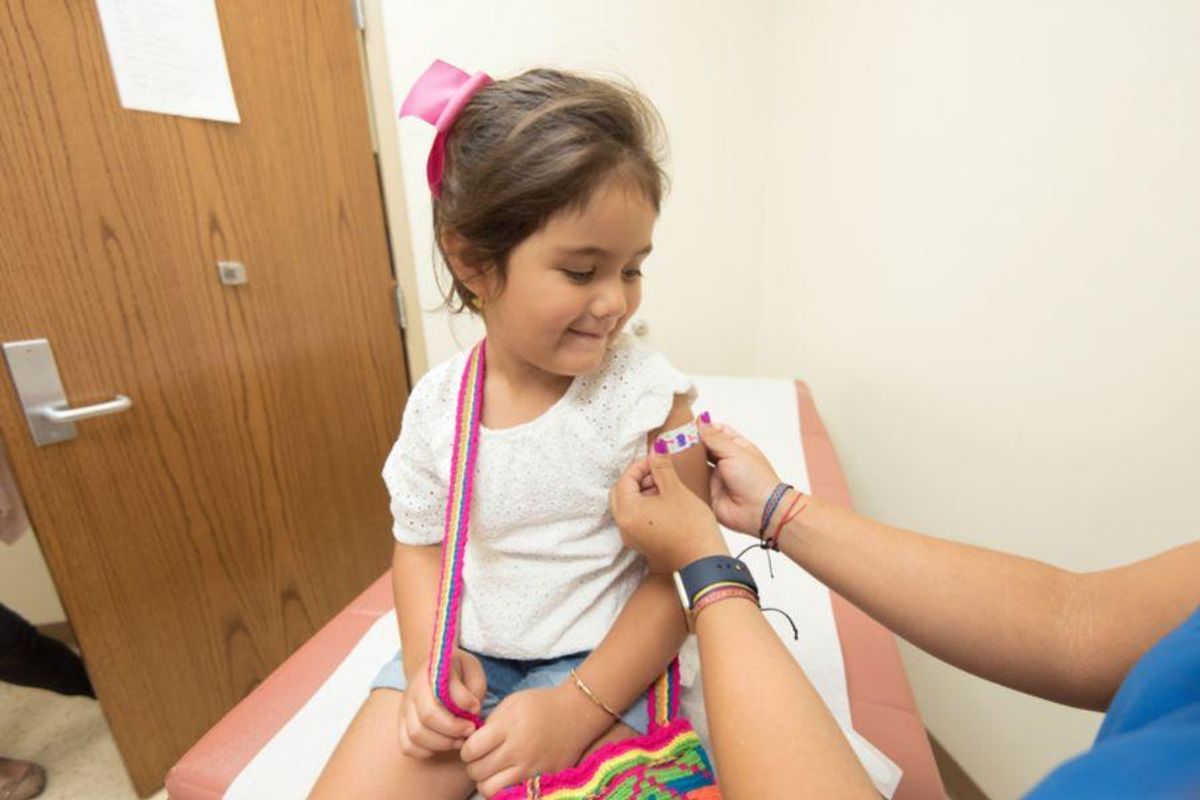No, the CDC did not mandate kids get the COVID-19 vaccine to go to school
Loads of misinformation keeps floating around about COVID-19 vaccines.

States set immunization requirements for school entry, not the CDC.
It's hard to log onto social media these days without being hit with a firehose of misinformation, especially when it comes to COVID-19. Getting accurate information during a global pandemic with a novel virus that keeps mutating is a challenge, and people's (sometimes understandable) distrust of the government, the media and various institutions certainly doesn't help.
But that doesn't mean there's no such thing as accurate information. A lot of what's floating around out there about COVID-19 is simply and verifiably wrong. As Kaiser Family Foundation President and CEO Drew Altman said, “It just isn’t enough for us to be in the business of putting out good information. We have to now also be in the business of countering misinformation and deliberate disinformation as well."
Unfortunately, studies of Facebook and Twitter have found that misinformation and disinformation spread faster and are more likely to be shared than true information. So, let's sort through some of the myths and facts about one of the biggest topics out there right now—COVID-19 vaccines and children.
Myth: The CDC is adding the COVID-19 vaccine to the mandated vaccine schedule for kids who attend school.
Fact: The CDC’s Advisory Committee on Immunization Practices (ACIP) recommended updating the 2023 childhood and adult immunization schedules to include additional information for approved or authorized COVID-19 vaccines. That is not the same as adding the vaccine to school vaccine requirements. The immunization schedule is a best practice recommendation, not a requirement.
\u201cMisinformation. The CDC does not decide which vaccines are mandatory for school attendance in kids. That's left to each state, which is why they are not uniform across the country.\u201d— Dr. Tara C. Smith (@Dr. Tara C. Smith) 1666184700
In fact, the CDC can't require kids to get vaccines. State and local jurisdictions decide what vaccines are required for school entry, not the CDC. States do look to the CDC's recommendation for guidance in making decisions, but just because a vaccine is recommended by the CDC doesn't mean schools will automatically require it. (For example, flu shots aren't required for most schools even though they're recommended by the CDC for school-aged children. And the HPV vaccine has been on the CDC's recommended schedule since 2006, yet only four states require it for school.)
Myth: The CDC added the COVID-19 vaccine to the Vaccines for Children program, which means kids will have to get it.
Fact: The ACIP unanimously voted to add the COVID-19 vaccine to the Vaccines for Children program, but that doesn't mean it's required. Vaccines for Children is a program that provides free vaccines to kids from low-income and uninsured families. Adding the COVID-19 vaccine just means it's included in that free program so more parents who want their kids to get it will be able to.
\u201cToday @CDCgov\u2019s independent advisory committee voted to include the COVID vaccine in the Vaccines for Children program, which provides free vaccines to 1/2 of US children, including those in Medicaid & those who are uninsured. This program helps reduce disparities in access. 1/5\u201d— American Academy of Pediatrics (@American Academy of Pediatrics) 1666217121
Myth: The COVID-19 vaccine is dangerous and kids are dying from it.
Fact: No, they're not. Let's look at the specific claims on this front.
First, the myocarditis question. Let's go to the experts at the American Heart Association for that one. According to its website, the most recent studies have shown that the risk of myocarditis from the vaccine is low and the risk from myocarditis is very low (all cases were considered mild and all recovered). But most importantly, studies have shown that the risk of myocarditis from COVID-19 infection is higher than it is from the vaccine.
If parents are concerned about the risks of myocarditis from the vaccine, they hopefully have even more concern about the risks of it from COVID-19 itself, since we know that COVID-19 can damage the heart.
Second, the "young people are dying suddenly at an alarming rate" claim. There are multiple ways in which this rumor has spread multiple times, so it's hard to tackle all of them at once. But if you've heard that vaccines are causing SADS (Sudden Arrhythmic Death Syndrome, which some have erroneously referred to as "Sudden Adult Death Syndrome"), read this fact check and the accompanying links. Also, note the fact that the SADS Foundation—an organization literally dedicated to this syndrome—recommends everyone with conditions linked to SADS get the COVID-19 vaccine.
People don't need to trust the government or the media to not fall for misinformation and disinformation about the COVID-19 vaccines. The most telling thing to me is that every reputable medical organization and association in the U.S. that I've checked recommends the COVID-19 vaccine. Every single one.
In fact, in July, the American Medical Association, the American Academy of Pediatrics and the American Academy of Family Physicians issued a joint letter urging families to get the vaccine for kids ages 6 months and up. These organizations are not the government or the media or the pharmaceutical companies. They are the nation's top experts on medical care for families. They're the ones we should be looking to for guidance on medical decisions, not politicians, social media influencers or cable news hosts.





 What was I doing again?
What was I doing again? A space waitress at work.
A space waitress at work.  Waking Up Funeral GIF
Waking Up Funeral GIF Rihanna Nails GIF
Rihanna Nails GIF Yoga pants.Image via Canva.
Yoga pants.Image via Canva. Our natural lashes are nice just the way they are!
Our natural lashes are nice just the way they are! One step forward, many steps back. Image via Canva.
One step forward, many steps back. Image via Canva.  Homelessness is especially rampant on the West Coast.Image via Canva
Homelessness is especially rampant on the West Coast.Image via Canva